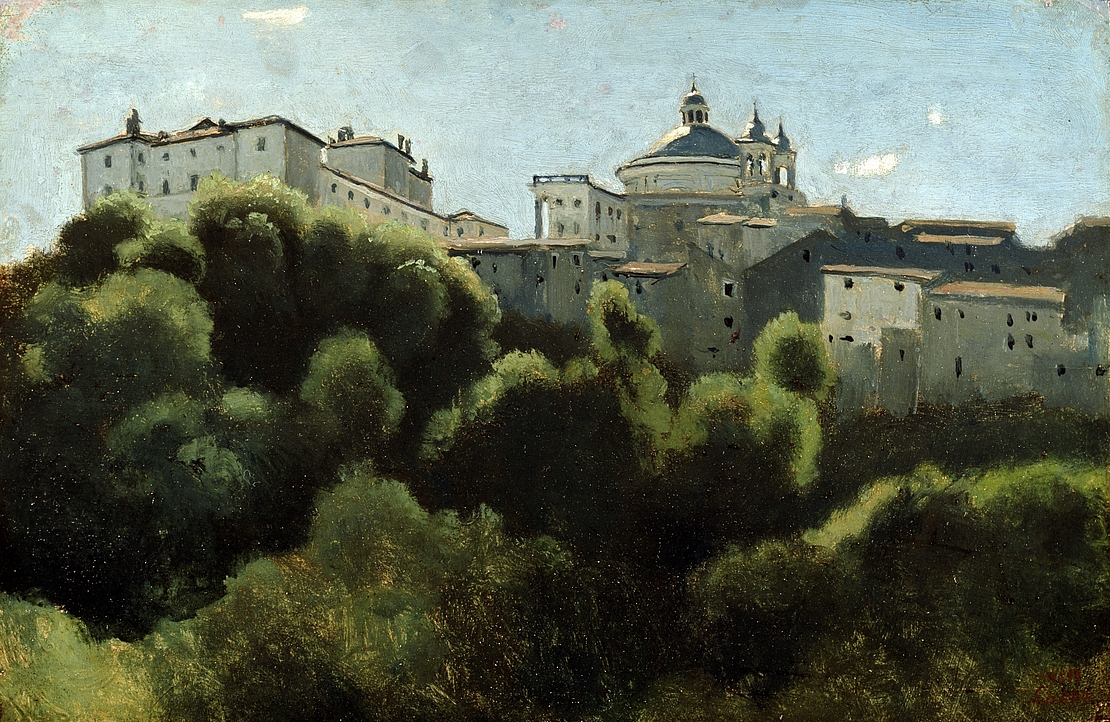
Wonderfully illuminated by backlight, the curves of tree crowns and bushes form a “cloud sea” in violent motion alternating between light and dark green. This weave of plants takes up around half of the picture, although one cannot identify individual trees — darkly shaded and light-flooded sections alternate. From a distance, they produce a perfect spatial illusion with a remarkably plastic effect; viewed at close quarters, they vanish into an astonishing abstraction. The façades of the Chigi Palace on the left, the church of Santa Maria Assunta — built between 1662 and 1664 based on the plans of Gian Lorenzo Bernini — remain distinctly two-dimensional, as do the neighboring buildings on the right. Gray and black brushstrokes suggest windows. Houses, roofs, walls, and windows melt together to form an almost uniform seam of buildings that follows the curves of the topography, additionally accentuating them. The proportions of the building silhouette and the dynamically varied greenness are vibrantly organized within a sophisticated compositional dramaturgy. The elevated position operates as a gesture of gentle heightening.
Light and dark are the image tools — nothing spectacular in themselves— that Corot deploys so effectively in his landscape study. The true “hero” of the picture is not the Chigi Palace — even though it appears in the picture’s title — but the nameless wood situated in front of it. While the palace is organically fused with the silhouette of Ariccia, the forest transforms itself into wild waves. The outer edges of the tree crowns contain the glaring sunlight: they form a dramatic rise and fall that appears as if on a stage, as if a theater of dance in bare outline were in progress. If the sun were instead to strike the wood parallel to our gaze, then the light and dark contrasts would vanish and the green would appear to us to be dull, with little accentuation.
In 1827, Camille Corot visited Ariccia for a second time, in order to create oil studies in the open air. Like many artists of his epoch, he had gone to Rome; artists would swarm out into Rome’s immediate environs in the search for a southern natural setting and for mysterious ancient remains. Ariccia is located in the province of Latium, around twenty-six kilometers to the southeast of Rome, in volcano country, nestled between the crater lakes of Lago Albano and Lago di Nemi. Situated on the famous Via Appia (on which construction started in 312 BC), Ariccia is among the oldest cities of Latium, and was at one time even a serious rival of Rome.
Markus Stegmann in: «Herzkammer», Museum Langmatt 2020